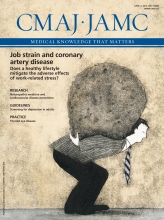Assessment of the pupils is an essential component of a basic neurologic or ophthalmic examination
Normally, the size of the pupil is determined by the interplay between the iris dilator muscle (innervated by sympathetic fibres) and the iris sphincter muscle (innervated by parasympathetic fibres). The sympathetic fibres originate from the hypothalamus, coursing through the brainstem, spinal cord, pulmonary apex and carotid artery; the parasympathetic fibres descend from the hypothalamus and travel along the third cranial nerve.1
If the pupils are not equally sized, they should be evaluated in bright and dim ambient light
Anisocoria is unequal pupil size. Normally, both pupils constrict equally in bright ambient light and dilate equally in dim ambient light. In physiologic anisocoria, the difference in pupil size remains the same in both bright and dim ambient light, and is usually less than 1 mm.2,3 If the anisocoria is exaggerated in dim light, the small pupil that fails to dilate is abnormal. An abnormally small pupil may be caused by Horner syndrome, pharmacologic miosis or posterior synechia (adhesion of the iris to the lens). If the anisocoria is worse in bright light, the large pupil that fails to constrict is abnormal. An abnormally large pupil can be secondary to a palsy of the third cranial nerve, Adie pupil, pharmacologic mydriasis, angle-closure glaucoma or trauma (including after surgery).2
In some situations, the presence of unequal pupils requires urgent neurologic investigation
A fixed, dilated pupil in the presence of ptosis and exotropia (outward deviation of the eye) may be due to a palsy of the third cranial nerve secondary to aneurysm of the posterior communicating artery and requires urgent neuroimaging. Dissection of the carotid artery can cause acute Horner syndrome, presenting with a small pupil and sometimes associated with pain in the face, head or neck.4 Infants presenting with Horner syndrome should be evaluated for neuroblastoma. The morbidity and mortality of these conditions can be substantially reduced with early recognition and timely management.
Even with pupils of equal size, the swinging flashlight test should be part of any neuro-ophthalmic examination
During this test, the ambient light is dimmed and the patient is asked to focus on a distant target. A bright light is shone on one eye, then quickly moved to the other. A normal response consists of a brisk pupillary constriction of the stimulated eye and simultaneous constriction of the fellow eye, maintained when the light is moved from one eye to the other. A relative afferent pupillary defect is present when the affected eye dilates (or fails to constrict briskly) after the light is quickly moved from the unaffected to the affected eye.
An abnormal result of a swinging flashlight test is a sensitive objective indicator of a defect in the afferent visual pathway
A relative afferent pupillary defect suggests the presence of optic neuropathy or severe retinal dysfunction. Optic neuropathy can occur in inflammatory conditions including optic neuritis, tumor compression and orbital congestion, or result from ischemic events such as anterior ischemic optic neuropathy. Advanced glaucoma and severe retinal damage may lead to a relative afferent pupillary defect. Despite being associated with substantial vision loss, cataracts and vitreous hemorrhage do not cause this finding.1
CMAJ invites submissions to “Five things to know about …” Submit manuscripts online at http://mc.manuscriptcentral.com/cmaj
Footnotes
-
Competing interests: Agnes Wong receives royalties from Oxford University Press. No other competing interests were declared.
-
This article has been peer reviewed.











